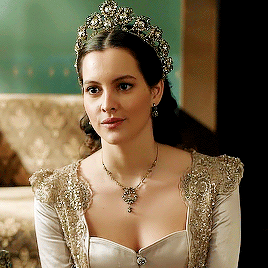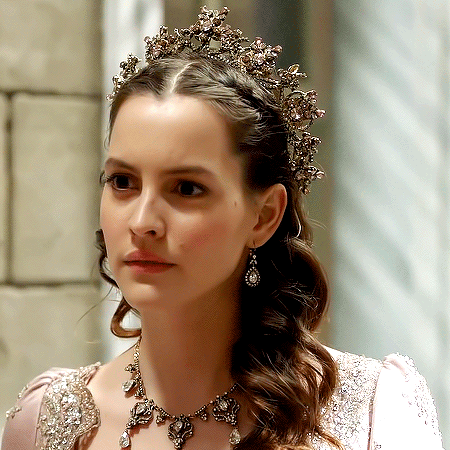#ayse haseki sultan
Text





MAKE ME CHOOSE MEME | anon asked - Ayşe and Murad IV or Farya and Murad IV
#magnificent century kosem#muhteşem yüzyıl kösem#magnificent century#perioddramaedit#onlyperioddramas#weloveperioddrama#periodedit#ayse haseki sultan#ayse sultan#haseki ayse sultan#murad iv#*make me choose meme#*ayse sultan
42 notes
·
View notes
Text








#history#magnificent century#muhteşem yüzyıl#ottoman#sultanas#ottoman sultanas#ottoman history#ottoman valide#ayse sultan#haseki ayse sultan#haseki farya sultan#farya sultan#farya bethlen#Ayse haseki sultan#My favorite#muhtesem yuzil kosem#magnificent century kösem
10 notes
·
View notes
Note
Ayşe Haseki sultan 4. Murad love
Based (≖ ‿ ≖) | ᎢℋᎪɳᏦ ᎩӫᏌ ✿♪♫
1 note
·
View note
Text




Leyla Feray as Haseki Ayse Sultan
Magnificent Century - Kösem Episode 36
#magnificent century#muhtesem yuzyil: kösem#haseki ayse sultan#leyla feray#turkish drama#stuff:mine#perioddramaedit#perioddramagif#perioddramasource#gifshistorical#mckedit
194 notes
·
View notes
Text
Family tree of Ahmed I
Ahmed (1590.04.18. - 1617.11.22.) - Kösem (~1589 - 1651.09.02.)
Mehmed 1605. 03. 08. - 1621. 01. 12.
Ayse ~1606 - 1657
Fatma ~1608 - 1671 (before March)
Hanzade 1609 - 1650.09.
disputed: Selim 1611.06.27.-1611.06.27.
Murad IV 1612.07.27. - 1640.02.08.
Kasim 1614 - 1638.02.17.
Ibrahim 1615.11.05. - 1648.08.18.
Ümmügülsüm ~1616 (possibly) - after 1690
Ahmed (1590.04.18. - 1617.11.22.) - Mahfiruze (~1589 - ~1612)
Osman II 1604.11.03. - 1622.04.20.
disputed: Gevherhan ~1606 - after 1631
disputed: Cihangir 1609
disputed Bayezid 1612. 12. - 1635.07.27.
Ahmed (1590.04.18. - 1617.11.22.) - Unknown concubine(s)
daughter born in 1605 March
Hasan 1612.11.25. - ~1612
Hüseyin 1613.11.14. - 1617
Atike 1614 - 1670
Süleyman 1615 - 1635.07.27.
Abide 1618 - 1648(?)
Orhan (died as a child)
Zahide (died as a child)
Zeynep (died as a child)
Esma (died as a child)
Hatice (died as a child)
Theories:
The daughter born in 1605 March being Gevherhan (and then she was not Mahfiruze's daughter).
Hasan being Mahfiruze's not Bayezid and they both died due to complications.
Zeynep being Mahfiruze's daughter as Osman II possibly had a daughter Zeynep (as there are two Zeyneps buried in Ahmed I's türbe), and since Zeynep is not a dynastical name, Osman may named her after his deceased sister.
PS: One of the sarcofagies is for a grown woman, which can be a mistake, or maybe Osman's daugter Zeynep reached adulthood (would be strange as until now there is no evidence for an adult sultana called Zeynep during this period).

#ahmed i#history#ottoman history#ottoman empire#sultanate of women#mahpeyker kösem#kösem#mahfiruze hatun#haseki kösem sultan#ayse sultan#fatma sultan#hanzade sultan#atike sultan#abide sultan#ümmügülsüm sultan#gevherhan sultan#sehzade mehmed#sehzade kasim#sehzade bayezid#sehzade süleyman
8 notes
·
View notes
Photo









make me choose
↳ anon asked: haseki ayse sultan’s purple dress from episodes 44 and 45 or her red dress from episodes 40 and 41?
#perioddramaedit#kosemedit#haseki ayse sultan#magnificent century kosem#muhteşem yüzyıl kösem#mck: s02e40#mck: s02e41#mmc
123 notes
·
View notes
Text


✱ Ayşe Sultan (Leyla Feray) — Magnificent Century: Kosem Ep.45
#magnificent century kosem#ayşe sultan#haseki ayse sultan#magnificent century: kösem#magnificent century#mc: kosem#muhteşem yüzyıl kösem#gifs
24 notes
·
View notes
Text






𝑂𝑡𝑡𝑜𝑚𝑎𝑛 𝐷𝑦𝑛𝑎𝑠𝑡𝑦 𝐻𝑖𝑠𝑡𝑜𝑟𝑦 𝐴𝑝𝑝𝑟𝑒𝑐𝑖𝑎𝑡𝑖𝑜𝑛 𝑀𝑜𝑛𝑡ℎ:
𝑊𝑒𝑒𝑘 2: 𝐻𝑎𝑠𝑘𝑖 𝑆𝑢𝑙𝑡𝑎𝑛𝑠/𝐿𝑒𝑔𝑎𝑙 𝑊𝑖𝑣𝑒𝑠
𝐷𝑎𝑦 12: 𝐴𝑦𝑠𝑒 𝑆𝑢𝑙𝑡𝑎𝑛, 𝐻𝑎𝑠𝑒𝑘𝑖 𝐴𝑦𝑠𝑒 𝑆𝑢𝑙𝑡𝑎𝑛
#ayse sultan#haseki ayse sultan#muhtesem yuzil kosem#magnificent century: kosem#ottoman dynasty history appreciation month:week 2
28 notes
·
View notes
Text
Power and status of ottoman princess
Title and honorifics
Before the rule of sultan Bayazid II every high ranking woman were called Hatuns,including mother,sisters,aunts and daughters, however thier social standing was naturally higher than non imperial women. The way to adrress them was Hatun that was used after their given name,for example, Gevherhan hatun,daughter of Mehmed the coqueror or effendi that would have similar meaning as mistress.
After accession of Bayazid II his daughters and granddaughters were given title of sultan,however non of his living sisters or aunts got the honor. Later on proper way to adress them woulf become “Sultanim”, which would mean “my sultan”,or again “effendim” by other members of imperial family. I would like to underline that contrary to what wikipedia states, there is no records that I know,where princesses where called with “Devletlu İsmetlu” like Valide sultan and Haseki sultan were.
The term “sultana” that was made more feminine by Europeans never existed in ottoman language.
Family, Marrige and Issues
I want to start discussing their family with brothers,it’s widely known fact that before suleyman there was “once concubine,one son” tradition therefore if shehzade/Sultan had full-sisters they were all older,that is one way to deduce if princess of unspecified mother was full sister of half sister of reigning sultan. Naturally Shezades had closer relationship to their full sisters as they were leaving with him and their mother,when he was appointed as governor of princely province. Their latter life would be spent in their brother’s harem before marriage.
being half sister of sultan did not automatically mean that their relationship would have been stained,however mostly,princess would favour full-brother over half,but were treated by same respect regardless who ascended the throne. It was different case when imperial princess had no full brother at all,for example Sah Huban, she had very close relationship with Suleyman,even closer than his deeply respected full sisters.
Their marriages,much like any other princesses of any country, was political,arranged by their parents to strengthen standing of their father or brother,for example daughters of Selim I were firstly married to powerful politicians,so their father would have supporters in his rebellion,while their second marriages were arranged to help Suleyman in his early reign. Their husbands were usually much older than them, therefore marital life was likely not consensual and in no way their choice. For example,Rustem paha,husband of Mihrimah,was same age as Hurrem,her daughter’s fate was even worse as she had to marry peer of her own grandfather,however given the fact that they had 8 children,marriage can be considered successful. After the Marriage princesses were getting their own little “Harrem”,where they had great rooms for themselves and their servants,where even their Husbands needed permission to enter and even refuse to have sexual intercourse with them,sometimes their marriage could end unconsumated and after some time princess could use another of their privilege-divorce. Reason of divorce could have been different: Personal attitude,mistreatment,political move or adultery. It was made clear,especially by Suleyman,that imperial princesses were full-fledged members of imperial family so they ranked higher than their husbands,therefore having relationship with other women was their humiliation,which would lead to divorce, after which they would retire in old palace and could refuse to remarry again.
Only their first degree descendants would be given imperial titles.
Daughters- Hanimsultan(with Ayse Humashah as exception)
Sons-Sultanzades. They ranked even below non-sultan imperial consorts and some of the highest ranking harem servants.
Hierarchy and Power
They actually had equal standing in ottoman hierarchy. As female members of dynasty they had the same status and privileges,were reffered as sultans and often received relative stipend.( Which was on average 200 akche a day, for comparison, Valide sultan had around 2000-3000 depended on time period, Haseki sultan 1000-1100(Hurrem as only exception,who got stipend of Valide sultan ) Gulfem,who was almost regarded as member of family herself was recieving 150, Nurbanu’s trusted friend and one of the highest ranking non-sultan woman ever Canfeda received 200, Mahidevran only received 40 and avarage stipend of cariye was 2-4) Besides, sisters of sultans were technically daughters of sultan, though the deceased one, still they were treated with great respect much like their late father. However, birth order was important thing in ottoman society so younger sister respected older and bowed to them as well as nieces bowing to aunts regardles of their martial or fianacal status. Therefore saughters of sultan,as nieces, were calling sisters of sultan,as aunts, “effendi" out of respect.
In conclusion, even if they had same social standing, sisters of sultan were still bit ahead daughters of sultan formally.
However, Granddaughters, Nieces and cousins of sultan,despite the same rank, were less prestigious.
Despite their relative social status and order of birth their actual power was dependent on several factors:
1. Their relationship with Padishah,Valide sultan or Haseki sultan. They had higher rank and much more evident political power, they still needed their permissions about major decisions,even if it were their right, so being on good terms with them was a good move. Half-sisters naturally were not as favoured as full-sisters by Valide sultan,but with padisah had more options, they could have been supportive, religious, charitable and obedient another way was sending beautiful, well-educated concubines,who could have become Haseki(after 1533), that is when their good relationship begun,most of Sultanate of women memebers were raised at their court and remained in favour after they became Valide Sultans, in that case even some of the Padisah’s expressed gratitude and gratefulness for raising their mother, (such occasion was Ahmed I’s attitude towards her aunt which I will discuss below.), they could also donate money to wars, harem managements and charitable projects, either all their own or assist Haseki sultan.
2. The second way to gain power was wealth. Money opens many doors and it was like that in the past. They could establish some business or even receive bribes.
3. They could also gain power with marriages, it was not only beneficial for their brothers,but for them as well. If their husband had a high rank, they could keep an eye on the political situation and act accordingly, they would use that influence to assist their brothers, who,In turn, would be extremely grateful for their support.
Comparison between Ottoman and European princess
Status- Status of European princesses depended on their marriage. Being princes was not guaranteed power,but only a formal status. For example, Margaret Tudor was below prince Henry in rank but when she married by proxy to Scottish king, she outranked him and demonstrated that by walking in front of him. On the other hand, another sister Mary married to Charles Brandon and was Duchess of Suffolk ever since,while Status of Imperial princess remained the same.
Opportunity- European princesses could have become Queen consort and Queen mother and veiled immense power, while imperial princesses could never become Haseki or Valide.
Marriage- Ottoman princesses were usually older when married and outranked their husbands,while European princesses were always below their husbands. Sultan could also refuse remarryin,while European princesses had no such right
Freedom-European princesses were less limited by social customs.
Consummation-Ottoman princesses had the right to refuse Consummation without a deadline, while European princesses had to Consummate marriage even if they were twelve, unless of course parents arranged it other way.
Divorce - it was right of ottoman princesses to divorce their husbands,while for European princesses it was a rare privilege.
Despite so many differences, one thing was same- they had a loveless purely political match .
Powerful ottoman princesses
Here I Rank ottoman princesses,who had considerable power and influence, sorted by date of birth.
P.S gifs are from MC and MC:K,but some characters might represent different historical figures.

Fatma sultan
Fatma may have been the second child of Ayşe Hafsa and Selim I . She was born in Trabzon around 1492 and spent her childhood there. When her younger brother Süleyman received his own princely province in 1509, she probably accomponied him to Caffa with their mother.
She was married in 1516 for the first time,but it soon ended in divorce and Fatma returned to Manisa. She gained considerable influence as she was most likely the sister,who was recorded to be in Manisa, helping mother manage harem and protect Suleyman from their father. If legends are true and Selim was indeed trying to kill Suleyman,that she had hands in saving him. Most likely, Fatma and her mother were instructing young sukeyman,how not to deserve the wrath of father and covering his mistakes. After Suleyman ascended the throne, she was married again to Kara Ahmed pasha in 1522. Marriage lasted long,but did not produce any child, so either fatma was infertile (Kara Ahmed pasha had two daughters that are disputed to be fatmas,but they were likely from previous marriage) or the match was not happy and Fatma refused sexual intercourse, however considering her reaction to his death, it was most likely the former.
According to what we have Fatma seems to be quite free spirited as depicted in the series. She was wealthy, cunning and might have been fond of parties. She had hands in financing some of her brother’s campaigns and even won the favour of janissrries. However, in 1555 Kara Ahmed pasha was executed by the efforts of Mihrimah and Hurrem and Fatma was married to eunuch and banished from the capital for hed intrigues against them She died either in 1557 or 1573.

Sah huban sultan
Daughter of Selim I and unknown concubine, born in 1500. As she has no full brothers, she was very close to Suleyman and their father, with whom she spent most of her childhood. Considering Suleyman’s great respect for her, Sah was likely a supporter of him and helped to deal with Selim I.
She was married in 1523 to well-educated and intelligent Lutfi pasha with whom she shared religious thoughts and beliefs. Marriage, however did not seem to be successful the couple only had one daughter and Sah refused to have a sexual relationship ever since. She was very pious, intelligent,outspoken and fierce in nature. In the only description of her daughter Esmahan Burnaz, it is said that she was arrogant and demanding and it was Shah’s domineering attitude in the family that was blamed for it, as by this “she had ruined the role of woman” in the child’s mind. However,that was recorded by the European ambassador only, who had never met any of them and probably heard some rumors or made it up after an ugly end of their marriage.
In 1541, Lutfi pasha punished a prostitute for adultery by mutilating her genitals.Şah could not tolerate the humiliation and mutilation of a woman without a word, which is why she got into an argument with her husband, who hit her . Şah had Lutfi pasha beaten up and immediately asked his brother to allow the divorce. Süleyman then exiled him. Şah remained with her brother in Istanbul for the rest of her life and supported the wife of Süleyman, Hürrem, in carrying out her construction projects. She lived a modest life in the Old Palace and devoted all her time to charity and religion. Shah had excellent relationship with Hurrem and Mihrimah and in my opinion, close bond between aunt and niece helped young sultan to shape her mind and characteristics.
She died in 1572 and was buried in her father’s complex.

Mihrimah Sultan(1522-1576)
Her life is very much known. She was the most powerful imperial princess in the empire, so I will just list some of her achievements:
1. Her stipend was 600 akches a day during the reign of three different Sultans. it was three times as much as regular pirncess
2. She had correspondence with Catherine de Medici and other foreigner diplomats, who would often send her gifts to help them in some political affairs.
3. She financed some of Suleyman’s campaigns all her own
4. She built a whole fleet of 400 ships.
5. She had three palaces and two mosques
6. She served as sole de facto Valide from 1558 to 1566 and shared it with Nurbanu from 1566 to 1574.
7. After the death of Bayazid Mihrimah banned everyone from laughing and sent back clothes to Suleyman and Selim who were secretly planning a grandiose wedding, that was cancelled by Mihrimah and instead a very plain ceremony was held.

Humasah 1543-c.1582 or later
She was a posthanous daughter of Shehzade Mehmed and despite being only a daughter of prince, she was given the same privileges,but greater power, as any other sultans. She was one of two favourite grandchildren of Hurrem and Suleyman. She married three times,but the source of her power was a good relationship with Sultans. She was the one who raised Safiye and gifted her to Murad, so her power reached it’s peak during his reign.
She financed many construction projects,but was buried in a mosque that was built by Hurrem and Suleyman for her father.

Ayse Humasah 1543-1594.
Daughter of Mihrimah sultan and Rustem pasha, she was practically the same as her cousin with whom she shared many things started from date of birth and ended with their name. Ayse Humasah was the only woman born to an ottoman princess,who was herself addressed as sultan and her children were considered members of the dynasty. She was married two times and her influence was extremely great during the reign of three Sultans. Her power reached it’s peak, when her husband was appointed a grand Vizier and she had hands in very major political decision.

Gevherhan Sultan. 1544-after 1526.
Eldest child of Nurbanu and Selim. She was married to Piyale Pasha, an admiral who died in 1578 and she was remarried in 1579. She was one who raised Handan and gifted it to the prince, for which not only Handan was grateful, but her son Ahmed as well, who after his accession gifted very expensive furs to Handan, Gevherhan and Safiye. The second gifts were given to Handan and Gevherhan only,which indicates that unlike Safiye,she never fell from his favour. Peak of her power was from 1598 during her husband’s grand vazirate. She did a lot of charity in her life.

Ismahan sultan 1545-1585
Daughter of Selim and Nurbanu,she was married to Sokollu Mehmed Pasha and Through her husband and her own rank, Esmehan was the most influential sultana of the empire for years. In wealth, only her aunt, Mihrimah, could overtake her, but in influence, almost no one could. She constructed several projects and had foreign diplomatic affairs, most notable her correspondence with Catherine de Medici. She had a very artistic and dramatic personality, often throwing parties and shows. She was recorded to be very much alike Hurrem,both of them were short, not conventionally beautiful,but very intelligent. She was heavily involving herself in politics with her mother.

Burnaz Atike Sultan
Sultan Atike was born in 1614 or 1615 and although some sources consider her to be the daughter of Kösem, she was certainly not her child. That can be supported by the fact that she supported Turhan’s rebellion and had a good relationship even after kosem was killed. She was one who raised Turhan and remained in friendly terms for both Turhan’s gratitude and their shared politican views. Atike was noted to love children very much,but had none on her own, so she was involved in raising her nephew,who regarded her as second mother and listened to every of her advice.
She died around 1570.
I hope you liked it, I think it’s unfair to only talk about Mihrimah,while there were so many powerful and intelligent Princesses. I did not talk about Esma sultan as she was in later centuries and I am not fond of her times.
Which ottoman princesses are you favourites?
If i accedentaly missed something out you can ask it in comments
#historical drama#period drama#history#sultanas#valide sultan#medieval women#nurbanu sultan#hurrem sultan#mihrimah sultan#safiye sultan#kosem sultan#turhan sultan#magnificent century#magnificent century kosem#mc: kosem#sultanate of women#sultan suleyman#haseki hurrem sultan#ottoman history#ottomanladies#ottoman empire#15th century#16th century#17th century
125 notes
·
View notes
Text
reallifesultanas Thank you very much for your answer! Yes I meant Dumas not Alderson sorry for that! Is there a reason for the illogical amount of salaries? I mean the earlier salary lists of registers clearly help us to indentify the sultanas. The 1555-1556 registers are 100% logical; the 1603-1604 registers are still logical: Safiye, Handan, aunts of Ahmed, great-aunt of Ahmed, great-great aunt's daughter (Ayse Hümasah), cousin of Mehmed III, far relatives. But then there is this one.. highest salary for the full sisters of the sultan is logical, but then what does the daughters of Murad III doing there? Fahri/Kamer and Hümaşah/Rukiye* are surely Murads and so Ümmügülsüm could be also Murad's... For the lesser salaries Beyhan, Safiye, Hatice I could imagine they were Mehmed III's, maybe Beyhan's Mustafa was Mirahur Mustafa? But these stipends are just not logical... (*Murad III's daughte Rukiye was said to be married to Nakkas Hasan not Huma). And for Ümmügülsüm there is that one report from 1688 (Katherine Trumbull) when it is said she developed a relationship with Sultana Ümmühan, the aunt of the deposed Sultan Mehmed IV, through visits to the harem. This Ümmühan could be Halil Pasha's wife and so Murad III's/Mehmed III's daugher, or is it more likely not an aunt but sister/cousin? Or she truly can be Ahmed I's daughter? There is this 85 numaralı Mühimme defteri that provide some informations suggesting suggesting Ümmügülsüm was sister of Murad IV. Sadly I dont have the book so I cannot check how true is this claim...
I hope you don't mind if we continue here on ottomanladies.
I know the harem register doesn’t seem to make sense from the point of view of hierarchy but we must remember that the hierarchy could be broken on the basis of favouritism. Maybe those aunts were more favoured than the others.

In this table we can see Gevherhan Sultan, a great-aunt of Ahmed I’s, the reigning sultan. Dumas mistakenly identifies her as a daughter of Murad III’s and a concubine of non-haseki rank, but the reality is she’s first because she’s the most senior princess alive. If you look closely at the second category — “Frais de bouche” — she receives the same amount as Ayse and Fatma, Safiye’s daughters. Gevherhan was quite favoured by Ahmed I because she had trained Handan in her household. Also, her late husband Cerrah Mehmed Pasha had performed Ahmed I’s circumcision. Borekçi says that she was the only recipient — apart from Handan and Safiye — of sable fur:
“A register preserved in the Topkapı Palace Archives gives further details of the gifts Gevherhan Sultan received from her great grand-cousin. At the beginning of this register, there are records of the furs and robes of honor sent by the new sultan to his larger family right after his enthronement on December 27, 1603. Here, Gevherhan Sultan is listed as a recipient of a sable robe (semmûr kaplu nimtâne) and recorded as the third female member of the dynasty after the retiring queen mother, Safiye Sultan, and the new queen mother, Handan Sultan, and before all other living sisters and daughters of Murad III and Mehmed III -- a clear indication of her privileged position. Later, on February 6, 1604, she again appears in the register, this time as the only female family member apart from Handan Sultan to receive a fur-trimmed silk robe.”
(I believe the 6 şehzâdegân are unmarried princesses that Ahmed still had to matchmake but this is another story)
I know it’s Rukiye that Öztuna says has married Nakkaş Hasan Pasha but he could be wrong tbh, it wouldn’t be the first time. Also, neither Sakaoğlu or Uluçay confirm this; they give no information about Rukiye except for the identity of her mother. Unfortunately Öztuna never gives his sources so we don’t know where he found that Rukiye was married to Nakkaş Hasan Pasha. I would trust the harem register and contemporary sources (the ragusian diplomat, in this case) more tbh… both say that Nakkaş Hasan Pasha was married to a princess called Hümaşah…
About Beyhan… the problem is the wife of Mirahur Mustafa Pasha went on to marry Cigalazade Sinan Pasha’s son Mahmud Bey in 1612, and died before 1620, the date of Mahmud Bey’s second wedding, which means she shouldn’t have been alive in 1638-39. The Ragusian letter date 1648, though, lists a Beyhan Sultan widow of “Nideli Mustafa Pasha”— unfortunately, I can’t say who this man is or what “nideli” means.
I do agree with you, though. I think that Beyhan, Safiye, and Hatice are daughters of Mehmed III. We know that seven princesses were married in the summer of 1613, after all. A letter dated July 1613 by a Ragusian diplomat, furthermore, says that “at the present there are fifteen sultanas”.
About Katherine Trumbull, I guess you mean this:
“While in Istanbul, Katherine had developed a relationship with Sultana Ümmühan, Mehmed IV’s aunt and sister to Ibrahim II. On 14 July 1688, Katherine met with Ümmühan for the first time, and the two women continued to meet in the imperial harem throughout Trumbull’s residence in Istanbul. During these visits, Katherine must have been accompanied by someone with knowledge of spoken Turkish, or else it is unclear how she would have been able to communicate with the women she met in the harem. At any rate, when she returned to the embassy, she brought to Trumbull news of things taking place in the Ottoman court.” — Ghobrial, John-Paul A, 'Overcoming Distance in Everyday Communication', The Whispers of Cities: Information Flows in Istanbul, London, and Paris in the Age of William Trumbull (Oxford, 2013; online edn, Oxford Academic, 23 Jan. 2014)
Unfortunately, William Trumbull’s diaries were not published, they’re in the British Library. I always like to cross-check my sources and the fact that I can’t read the original kind of annoys me. Ümmühan is quite an unusual name for an Ottoman princess: Ümmi means mother and Han sovereign, it kind of sounds like “valide sultan”, which is why I thought it was a title for a moment but I couldn’t find anything to confirm this. It is kind of interesting, though, that Öztuna says that Ibrahim’s eldest daughter was called Ümmügülsüm, who could have been named after another Ümmügülsüm (the one that in 1622 was unmarried? Who knows)
The Mühimme defteri is not a book but a collection of copies of all the imperial decrees or decisions taken in the imperial council. They’re numbered and the number 85 refers to the years 1630-31. You can find the PDF for free on the website of the Turkish National Archives but, well, it’s in Ottoman Turkish.

(This is one of them)
So I can’t really read it even though I have it.
#ask: ottoman history#reallifesultanas#gevherhan sultan daughter of selim ii#rukiye sultan daughter of murad iii#humasah sultan daughter of murad iii#unnamed daughters of mehmed iii#i'm sorry if the layout looks weird but it's been so long since i used tumblr and i'm a little rusty
11 notes
·
View notes
Text
Ayşe was born around 1613, she was greek. With permission of Kösem Sultan, Murad IV rewarded her with Haseki Sultan title. In 1633, Murad raises her salary to 2000 aspers a day. The number and identity of her childern has not been confirmed. Angelo Alessandri, a secretary of venetian ambassador wrote about her that she was of Greek origin. According to him, although she was beautiful, she was not as beautiful in spirit as her mother- in law Kösem. Apparently, Ayse was a woman who wasted her money more for greed then generosity. Murad was known for loving Ayşe. He treated her like a queen and she behaved like a queen.Ayşe accompanied Murad IV to Baghdad Campaign. Which was unusal since the incident with Bayezid I amd Olivera Lazarevic when they were captured by Timur. According to austrian historian Joseph von Hammer- Purgstall, Ayşe witnessed the entire campaign.Murad IV passed away in February 1640. We know that Kaya Esmehan's mother came into conflict with Kösem Sultan because Kösem wanted to marry the little girl Kaya to Melek Ahmed Pasha, who was about the same age as Kösem, and she succeeded in doing so. Ayse's salary was cut to just 100 aspers per day. This could just be a coincidence or a hint that Ayse was Kaya's mother. Ayşe passed away in 1679/1680.

youtube

#valide sultan#youtube#ayşesultan#hasekiayşesultan#ottoman history#histoire#history#hasekisultan#sultanmurad#kösemsultan
12 notes
·
View notes
Text








#history#magnificent century#muhteşem yüzyıl#ottoman#sultanas#ottoman sultanas#ottoman history#ottoman valide#haseki ayse sultan#Ayse sultan#Sultana ayse#My favorite#muhtesem yuzil kosem#magnificent century kösem
21 notes
·
View notes
Text




Ayse Sultan × Medea by Euripides
Oh children, my children, you still have a city and a home, where you can live, once you've left me in wretched suffering.
You can live on here without your mother.
But I'll go to some other country, an exile, before I've had my joy in you, before I've seen you happy, or helped to decorate your marriage beds, your brides, your bridal chambers, or lifted high your wedding torches. How miserable my self-will has made me. I raised you— and all for nothing. The work I did for you, the cruel hardships, pains of childbirth— all for nothing. Once, in my foolishness, I had many hopes in you—it's true— that you'd look after me in my old age, that you'd prepare my corpse with your own hands, in the proper way, as all people wish.
But now my tender dreams have been destroyed.
(made for my darling Joanna's / @mihrunnisasultans birthday & inspired by her own idea <3)
#magnificent century#muhtesem yuzyil#perioddramaedit#muhtesem yuzil kosem#my edits#ayse sultan#ayse haseki sultan#haseki ayse sultan#leyla feray#myykosem#mck edit#medea#medea euripides#filter credits: queensfilter on Instagram#graphic edit
57 notes
·
View notes
Text



Leyla Feray as Haseki Ayse Sultan
Magnificent Century-Kösem Episode 36
#magnificent century: kösem#muhtesem yuzyil: kösem#haseki ayse sultan#leyla feray#turkish drama#stuff:mine#perioddramagif#perioddramasource#perioddramaedit#gifshistorical#mckedit
68 notes
·
View notes
Text
Portrait of Murad IV's consorts / IV. Murad ágyasainak portréi
Haseki Ayşe Sultan
The Haseki
Ayşe Sultan was Murad’s favorite, dominating his reign throughout. Ayşe may have been roughly the same age as Murad, born around 1612. We know that her origin was Greek, for the ambassadors often likened her to her Greek mother-in-law, Kösem Sultan. Ayşe appears in harem records from 1628, so presumably, it was at this time that she became Murad's concubine. Unfortunately, we do not know who Ayşe’s children were and how many children she had, her only known daughter was Esmehan Kaya, who was born in 1633.
We do not know exactly when Ayşe became Haseki Sultan, but we can assume the date 1632. For from this year we have an ambassador report according to which Murad asked his mother for approval to raise the mother of his most recently born daughter to the Haseki rank. Unfortunately, we do not know which girl was born in 1632. Hanzade was born in 1631 or 1632, and a girl named Esmehan was born and die surely before 1633, but we do not know who was the mother of these sultanas. It is also possible that we erroneously postpone the birth of Esmehan Kaya to 1633. However, since Ayşe held the rank of Haseki and dominated throughout Murad's reign, we can assume that she had several children in addition to Kaya, especially boys. So it is simply possible that she gave birth to a child in 1632.
Not much of Ayşe's personality is known. In 1637, the Venetian ambassadors' secretary Angelo Alessandrini spoke of Ayşe as a woman of outstanding beauty, but in spirit, she was not in the least like the Valide Sultan, Kösem. Nonetheless, according to Alessandrini, the sultan holds her in high esteem and treats her like a queen, and Ayşe also strives to behave like a real queen. However, according to the secretary, she has no chance and in vain she tries to imitate the Valide Sultan in her clothes, jewelry, and number of servants, she can never reach her. Alessandrini reveals a lot about Ayşe with this short description, but it is important to keep in mind that Alessandrini and the ambassador he worked with were extremely loyal admirers of the great Valide Sultan, Kösem, so it is not surprising that no one could reach her in their opinions.
The strong bond between Ayşe and Murad is well exemplified by the fact that Murad took Ayşe with him on his campaign of Yerevan. This was exceptional, for the sultans had not taken their wives and favorite concubines with them for centuries. Bayezid I and his wife fell into the captivity of Timur Lenk together and, according to legend, Bayezid was tortured by Timur with raping and humiliating his wife in front of Bayezid. There is also a known case from Selim I's time when, during a campaign against the Safavids, Selim captured one of the shah's favorite concubines (or his wife), who he then married to an unimportant Ottoman official. Aware of such risks, most sultans did not take their wives with them. Some believe that Ayşe gave birth to a son named Aleaddin during this campaign, but this is probably the result of a misunderstood. Prince Aleaddin was indeed born in 1635 during the campaign, but he was born in Istanbul, so Ayşe, who was on the campaign, could hardly have been his mother, and Murad could hardly have allowed his pregnant concubine to accompany him to the campaign.
Perhaps precisely because Ayşe was with Murad throughout the campaign, many blame Ayşe for the execution of Murad’s younger brothers. After returning from the campaign, Murad killed his two half-brothers, Bayezid and Suleiman. However, there is no evidence that Ayşe ever tried to turn Murad against the princes. After the campaign, several eyewitnesses described Ayşe’s return to Istanbul as a very magnificent event. For Ayşe, this was probably one of the last magnificent moments, as soon Murad's health deteriorated, his sons died and a new concubine emerged, whom Murad also raised to the rank of Haseki and who was paid a higher salary than Ayşe.

The Widow Sultana
After the death of Murad in 1640, she moved to the Old Palace with the other concubines of Murad and with her child or children. Her relationship with Kösem Sultan was probably never very good and close, but it soon reached a low point. Esmehan Kaya entered an age to be slowly married off in the mid-1640s. The selection of the husband was the responsibility of the Sultan and the mother of the child. The Valide also had a word but she was not the one to decide. We know, for example, that even though Nurbanu wanted to marry one of her grandchildren to a certain man, Safiye (the girl’s mother) prevented this. That is why there was nothing strange about Ayşe choosing a husband for Esmehan Kaya herself. The husband candidate was not particularly politically significant anyway. He was one of Murad's former swordbearers, to whom Murad himself promised Kaya before he died. Kösem, however, wanted one of her own trusted men to be Kaya’s husband, a pasha who was loyal to her already and who she could permanently chain to herself with marriage.
So Ayşe and Kösem were tense to each other, but it is not known in detail how the war between the two women took place. Some say Ayşe tried to seek the help of Sultan Ibrahim, who, however, wanted to take advantage of the situation and wanted Ayşe for himself. In the end, this did not happen, so Kösem and her chosen one, Melek Ahmed Pasha won. Kaya and Kösem were close to each other, she was Kösem's favorite grandchild, this is why it is strange that Kösem forced her to marry Melek Ahmed despite Kaya's own will. The fact that Kösem forced Kaya, a barely 13-year-old girl, to consummate the marriage with a pasha (who in age was like Kaya's own grandfather) complicating matters further. It was especially extreme because Kaya threatened the pasha with a dagger to leave her alone and the pasha accepted this. So both of the parties were totally fine with it, but Kösem still did not let it happen. Maybe Kösem thought that without consummating the marriage Ayşe could have tried to invalidate it.
Perhaps the former events also are related to the fact that instead of Ayşe's previous high salary (2000 aspers per day), in the Old Palace she received only 100-200 aspers per day for the rest of her life, regardless of whether Valide and Haseki Sultanas could keep their original salaries even in the Old Palace. Ayşe disappears from the harem records in 1680, suggesting that she died in either 1679 or 1680. During her relatively long life, she could see the reign of three sultans, reached heaven as Murad’s favorite, and reached hell as a mother. In addition to Esmehan Kaya, she certainly had sons and perhaps other daughters who all died as children. Her only child who reached adulthood, Esmehan Kaya, also died before Ayşe in 1658.

The second Haseki Sultan
Not much is known about her, her name, origin, the identity of her children are all obscured. All we know is that after Murad’s campaign in Yerevan, she was elevated to the rank of Haseki, certainly because she gave birth to a son. Maybe she was the mother of Prince Aleaddin, but more likely she had given birth to her child later, perhaps she was the mother of a prince who was born in 1638, perhaps of another unknown child. The second Haseki started her career with a daily salary of 2571 aspers, which was higher than the salary of Ayşe with 2000 aspers. We do not know the reason for this, but barely seven months later Murad also reduced her salary to 2,000 aspers. Perhaps the reason for the extremely high salary could have been that she became pregnant (or gave birth to a son) when all of Murad's sons died and by the time Prince Kasim (his brother) had already been executed? A heir was more urgent at this time than ever before, so it makes sense for Murad to give the concubine an outstanding allowance for the news of pregnancy or childbirth. Then, seven months later, when the Haseki lost her child or gave birth to a daughter, Murad reduced her salary to the level of Ayşe's, who also lost her sons.
Regarding her origin, the possibility arises that she was Sicilian. Jean-Baptiste Tavernier reports that Murad spent a particularly large amount of time in the Yerevan Pavilion with a Sicilian woman who he loved very much and who, in addition to her beautiful appearance, was a truly generous creature, so Murad never denied anything from her. According to Tavernier, she was a Sicilian noblewoman who was captured at sea and then gifted to the Sultan by Algir's beylerbey. Maybe the story is true, maybe not. Maybe it's about the second Haseki, maybe someone else.
With Murad’s death, the second Haseki disappears from the harem records forever, for which there are only two explanations (especially knowing that Ayşe appears precisely in the same register until her own death). The second Haseki maybe died shortly before Murad or was married off. The latter would not be unusual, since the widows of the sultans were often married off if they were childless or only had daughters. Since it is quite probable that the second Haseki lost her child, it was a logical solution to marry her off. Since she did not live in the harem anymore and is not on the registers, we do not know when she died.

Sanavber Hatun
Sanavber was a member of Murad's harem, of whom we know that she had a foundation which she established in 1628. The date of 1628 makes it probable that Sanavber may not have been Murad's concubine as Murad’s first child was born in 1627, so while it is possible for his mother to be Sanavber, it is unlikely that a young and inexperienced mother around the age of 15 would be allowed (and has the money) to establish a foundation. It is more likely that Sanavber was a high-ranking harem servant who owed her privileged status to either Murad or to Kösem Sultan. What makes her particularly interesting is that the documents of her foundation refer to her as “Sanavber bint Abdülmennan,” which is not the usual reference to converted slaves but a reference to a Muslim woman. Sanavber, then, may have been a high-ranking, free Muslim woman who perhaps belonged to Murad’s harem as a poet or associate, such as Hubbi Hatun was in the harem Selim II and Murad III?

Emirgün's sister
According to some, when Emirgün surrendered and handed over the castle of Yerevan to Sultan Murad in 1635, he presented his sister to the sultan. Legend has it that the woman was so beautiful that all of Murad's concubines faded beside her. Others say Murad never made Emirgün's sister his concubine, but there are also those who say Emirgün never gave his sister to Murad. Either way, the woman never entered Murad’s Istanbul harem.
Rosana
Rosana is probably a legend rather than Murad’s real concubine. Legend has it that Rosana was tall, blonde, and very light-skinned, but very bad in personality, so much so that Murad was afraid of her. Rosana was jealous of everything and everyone, hating Murad's other consorts, his younger brothers. Some go so far that it was Rosana, who executed the sultan's younger brothers on behalf of Murad. When one of Murad’s sisters realized this, she accused Rosana, but Murad didn’t believe her sister and became so angry that he killed her with a hammer. Finally, Kösem proved that Rosana was the murderer of the princes, by the time Murad himself stabbed the woman with a dagger, but the sultan never loved another woman later. I think it’s clear to everyone that this is more of a fairy tale than a real story. Never does a harem register or any ambassador from the period mention Rosana.

Used sources: C. Finkel - Osman's Dream: The Story of the Ottoman Empire; L. Peirce - The imperial harem; G. Piterberg - An Ottoman Tragedy, History and Historiography at Play; Öztuna - Devletler ve Hanedanlar; Uluçay - Padişahların Kadınları ve Kızları; F. Davis - The Palace of Topkapi in Istanbul; Y. Öztuna - Genç Osman ve IV. Murad; G. Junne - The black eunuchs of the Ottoman Empire; R. Dankoff - An Ottoman Mentality: The World of Evliya Çelebi; R. Murphey - ‘The Functioning of the Ottoman Army under Murad IV (1623–1639/1032–1049):Key to Understanding of the Relationship Between Center and Periphery
* * *
Haseki Ayşe Sultan
A Haszeki
Ayşe szultána volt Murad kedvence, aki uralkodását végig dominálta. Ayşe valószínűleg Muraddal nagyjából egy idős lehetett, 1612 körül születhetett. Származását tekintve tudjuk, hogy görög volt, ugyanis a követek gyakran hasonlították szintén görög anyósához, Köszem szultánához. Ayşe 1628-tól tűnik fel a háremjegyzőkönyvekben, így feltehetőleg nagyjából ekkor lett Murad ágyasa. Sajnos nem tudjuk, hogy kik voltak Ayşe gyermekei és hogy hány gyermeke volt, egyetlen ismert lánya Esmehan Kaya, aki 1633-ban született.
Nem pontosan tudjuk, hogy Ayşe mikor lett Haszeki szultána, azonban feltételezhetjük az 1632-es dátumot. Ugyanis ebből az évből maradt ránk egy követi beszámoló, mely szerint Murad anyja jóváhagyását kérte, hogy Haszeki rangra emelje (vagy feleségül vegye) legújabban született lányának anyját. Sajnos nem áll rendelekzésünkre, hogy melyik lány született 1632-ben. Hanzade 1631-ben vagy 1632-ben született, egy Esmehan nevű lány pedig tudottan 1633 előtt, ám nem tudjuk ki volt ezen szultánák édesanyja. Az is lehet, hogy Esmehan Kaya születését tesszük tévesen 1633-ra. Mivel azonban Ayşe a Haszeki rangot viselte és Murad uralma alatt végig dominált, feltételezhetjük, hogy több gyermeke volt Kaya mellett, különös tekintettel fiúkra is.
Ayşe személyiségéről nem sok maradt fenn. Angelo Alessandrini velencei titkár 1637-ben úgy beszélt Ayşéről, mint kiemelkedő szépségű nőről, aki azonban lélekben a legkevésbé sem olyan, mint a Valide szultána, Köszem. Ettől függetlenül Alessandrini szerint a szultán nagy becsben tartja és királynőként bánik vele, Ayşe pedig igyekszik úgy is viselkedni, mint egy valódi királynő. Erre azonban a titkár szerint esélye sincs és hiába próbálja ruháiban, ékszereiben és szolgálói számában is utánozni a Valide szultánát, sosem érhet fel hozzá. Alessandrini ezzel a rövid leírással is sokat elárul Ayşéról, azonban fontos észben tartanunk, hogy Alessandirini és a követ, akinek dolgozott, Köszem végletekig hűséges csodálói voltak, így nem meglepő, ha számukra senki nem érhetett fel a nagy Valide szultánához.
Az Ayşe és Murad között lévő erős köteléket jól példázza, hogy Murad magával vitte Ayşét yerevani hadjáratára is. Ez kivételes volt, ugyanis a szultánok évszázadok óta nem vitték magukkal feleségeiket és kedvenc ágyasaikat a hadjáratokra. I. Bayezid és felesége ugyanis együtt estek Timur Lenk fogságába és a legendák szerint Bayezidet úgy kínozta Timur, hogy feleségét gyalázta és alázta meg előtte. Emellett I. Szelim idejéből is ismert egy eset, mikor egy szafavidák elleni hadjárat során Szelim fogjul ejtette a sah egyik kedvenc ágyasát (vagy feleségét), akit aztán rangol alul házasított ki egy oszmán tisztviselőhöz. Ilyen kockázatok ismeretében a legtöbb szultán nem vitte magával feleségeit, nem úgy Murad. Egyesek úgy tartják, hogy Ayşe a hadjáraton adott életet Aleaddin nevű fiuknak, ez azonban valószínűleg egy félrefordítás eredménye csupán. Aleaddin herceg valóban 1635-ben született a hadjárat ideje alatt, azonban Isztambulban jött világra, így aligha lehetett a hadjáraton tartózkodó Ayşe az édesanyja és Murad aligha engedte volna várandós ágyasának, hogy elkísérje a hadjáratra.
Talán épp amiatt, mert Ayşe végig Murad mellett volt a hadjáraton, sokan okolják Ayşét Murad öccseinek kivégeztetése miatt. Murad ugyanis a hadjáratról visszatérve ölette meg két féltestvérét, Bayezidet és Szulejmánt. Azonban nincs arra utaló bizonyíték, hogy Ayşe valaha is a hercegek ellen próbálta volna fordítani Muradot. A hadjárat után több szemtanú is leírta Ayşe Isztambulba való visszatérését, mint egy igen pompás eseményt. Ayşét pedig nemsokkal később Murad is követte. Ayşe számára valószínűleg ez volt az egyik utolsó fényűző pillanat, hiszen hamarosan Murad egészsége egyre rosszabbra fordult, fiai hamarosan meghaltak és hamarosan előkerült egy új ágyas, akit Murad szintén Haszeki rangra emelt és akinek magasabb fizetést adott, mint Ayşének.

Az özvegy szultána
Ayşe Murad 1640-es halála után a Régi Palotába költözött Murad többi ágyasával és gyermekével vagy gyermekeivel együtt. Viszonya feltehetőleg sosem volt túl jó és közeli Köszem szultánával, de hamarosan elérte a mélypontot. Esmehan Kaya az 1640-es évek közepére lassan kiházasítandó korba került. A férj kiválasztása a mindenkori szultán és a gyermek édesanyjának feladata volt. A Valide szultánának minden bizonnyal szintén lehetett szava, ám nem ő döntött. Tudjuk például, hogy Nurbanu hiába szerette volna egyik unokáját egy bizonyos férfihoz adni feleségül, Safiye (a lány anyja) ezt megakadályozta. Épp ezért nem volt abban semmi furcsa, hogy Ayşe maga válasszon férjet Esmehan Kaya számára. A férjjelölt egyébként nem volt különösen jelentős politikai szempontból. Murad egyik korábbi fegyverhordozója volt, akinek még maga Murad ígérte oda Kayát, mielőtt meghalt volna. Köszem szultána azonban a saját emberei közül akart valakit Kaya férjéül, egy olyan pasát, aki hűséges hozzá és akit végleg magához láncolhat a házassággal.
Ayşe és Köszem egymásnak feszültek tehát, de nem tudni részletekbe menően, hogyan zajlott a két nő közötti háború. Egyesek szerint Ayşe igyekezett Ibrahim szultán segítségét kérni, aki azonban ki akarta használni a helyzetet és magának akarta Ayşét. Végül ez nem történt meg, így győzött Köszem és a választottja Melek Ahmed Pasa. Kaya és Köszem különösen közel álltak egymáshoz, ő volt Köszem kedvence, emiatt is különös, hogy Köszem a lány kérése ellenére is hozzákényszerítette a saját választottjához. Tovább bonyolítja a helyzetet a tény, hogy Köszem kényszerítette az alig 13 éves Kayát és a nagyapja korú pasát, hogy elhálják a nászt, miután ezt Kaya megtagadta a pasa pedig egyetértett vele. Talán Köszem motivációja az volt, hogy elhálás nélkül Ayşe megpróbálhatta volna érvényteleníteni azt.
Talán az előbbi eseményeknek is köze lehet ahhoz, hogy Ayşe korábbi magas fizetése (napi 2000 asper) helyett a Régi Palotában csupán 100-200 asperes napi fizetést kapott élete végéig, függetlenül attól, hogy a Valide és Haszeki rangot viselők nőknek Régi Palotába költözés után sem volt szokás csökkenteni a fizetését. Ayşe 1680-ban tűnik el a hárem jegyzőkönyvekből, ami arra enged következtetni, hogy vagy 1679-ben vagy 1680-ban halt meg. Viszonylag hosszú élete során három szultán uralkodását is láthatta, megjárta a mennyet Murad kedvenceként és a poklot anyaként. Esmehan Kaya mellett egészen biztosan voltak fiai és talán más lányai is, akik gyermekként mind meghaltak. Egyetlen felnőttkort megérő gyermeke, Esmehan Kaya is Ayşe előtt halt meg 1658-ban.

A második Haszeki szultána
Nem sokat tudni róla, neve, származása, gyermekeinek kiléte mind homályba vész. Annyit tudunk, hogy Murad yerevani hadjárata után lett Haszeki rangra emelve, minden bizonnyal azért, mert életet adott egy fiúnak. Talán ő volt Aleaddin herceg anyja, ám ennél valószínűbb, hogy még később hozta világra gyermekét, talán ő volt egy 1638-ban világra jött herceg anyja, talán más ismeretlen gyermeké. A második Haszeki 2571 asperes napi fizetéssel kezdte meg pályafutását, amely magasabb volt, mint Ayşe 2000 asperes fizetése. Ennek okát nem tudjuk, azonban alig hét hónappal később Murad lecsökkentette az ő fizetését is 2000 asperre. Talán az extrém magas fizetés oka lehetett, hogy akkor lett terhes (vagy szült fiút), mikor Murad összes addig élő fia elhunyt már és amikorra talán már Kasim herceget (édesöccsét) is kivégeztette? Ekkor sürgősebb volt egy örökös, mint bármikor máskor, így logikus, hogy a terhesség vagy szülés hírére Murad kimagasló juttatást adjon az ágyasnak. Aztán hét hónappal később, amikor a Haszeki elvesztette gyermekét vagy leányt szült fizetését Murad lecsökkentette a szintén fiait elvesztő Ayşe szintjére.
Származásával kapcsolatban felvetődik annak lehetősége, hogy szicíliai volt. Jean-Baptiste Tavernier beszámol arról, hogy Murad különösen sok időt töltött a Yerevan Pavilonban egy szicíliai nővel, akit nagyon szeretett és aki gyönyörű külseje mellett igazán nagylelkű teremtés volt, így Murad sosem tagadott meg tőle semmit. Tavernier szerint nemesi származású szicíliai nő volt, akit a tengeren ejtettek fogságba, majd Algír beglerbégje ajándékozta a szultánnak. Talán igaz a történet, talán nem. Talán a második Haszekiről van szó, talán másról.
Murad halálával a második Haszeki örökre eltűnik a hárem jegyzékből, melyre csak két magyarázat lehet (különösen annak ismeretében, hogy Ayşe precízen megjelenik saját haláláig ugyanebben a jegyzőkönyvben): a második Haszeki is elhunyt Murad előtt nemsokkal vagy kiházasították. Utóbbi nem lenne szokatlan, hiszen a szultánok özvegyeit gyakran házasították ki, ha azok gyermektelenek voltak vagy csak lányaik voltak. Mivel elég valószínű, hogy a második Haszeki elvesztette gyermekét, logikus megoldás volt kiházasítása. Mivel nem a háremben élt és nem szerepel a jegyőzkönyvekben nem tudjuk mikor halt meg.

Sanavber Hatun
Sanavber, Murad háremének egyik tagja volt, akiről annyit tudunk, hogy a nevével ellátva létezett egy alapítvány, melyet 1628-ban hozott létre. Az 1628-as dátum valószínűsíti, hogy Sanavber talán nem Murad ágyasa volt. Murad első gyermeke 1627-ben jött világra, így bár lehetséges, hogy az ő anyja legyen Sanavber, ám valószínűtlen, hogy egy 15 év körüli, friss és tapasztalatlan anyának engedik (és van rá pénze), hogy alapítványt hozzon létre. Valószínűbb, hogy Sanavber egy magasrangú hárem szolgáló volt, aki kiemelt státuszát vagy Köszem szultánának vagy Muradnak köszönhette. Különösen érdekessé teszi helyzetét, hogy a dokumentumok úgy hivatkoznak rá, mint “Sanavber bint Abdülmennan”, ami nem az áttért rabszolgák szokásos hivatkozása hanem egy muszlim nő hivatkozása. Sanavber tehát lehet, hogy egy magas rangú, szabad muszlim nő volt, aki talán költőként vagy társalkodóként tartozott Murad háremébe, mint például Hubbi Hatun II. Szelim és III. Murad háremébe?

Emirgün testvére
Egyesek szerint mikor Emirgün megadta magát és átadta Yerevan várát Murad szultánnak 1635-ben, akkor húgát a szultánnak ajándékozta. A legendák szerint a nő olyan gyönyörű volt, hogy mellette Murad minden ágyasa elhalványult. Mások szerint Murad sosem tette ágyasává Emirgün testvérét, de olyanok is vannak, akik szerint Emirgün sosem adta oda húgát Muradnak. Akárhogy is, a nő sosem lépett be Murad isztambuli háremében.
Rosana
Rosana valószínűleg inkább egy legenda, mintsem valódi ágyasa Muradnak. A legendák szerint Rosana magas volt, szőke és nagyon világos bőrű, azonban nagyon rossz természetű, olyannyira, hogy Murad is félt tőle. Rosana mindenre és mindenkire féltékeny volt, gyűlölte Murad öccseit. Egyesek odáig mennek, hogy Rosana volt az, aki Murad nevében kivégeztette a szultán öccseit. Mikor Murad egyik húga rájött erre, megvádolta Rosanát Murad előtt, aki nem hitt testvérének és egy kalapáccsal megölte őt. Végül Köszem bizonyította, hogy Rosana volt a hercegek gyilkosa, mire Murad maga szúrte le a nőt egy tőrrel, ám a szultán később sosem szeretett más nőt. Azt hiszem mindenki számára egyértelmű, hogy ez inkább egy mese, mint valódi történet. Soha egy hárem jegyzék sem említi Rosanat és egy körabeli követ sem.

Felhasznált források: C. Finkel - Osman's Dream: The Story of the Ottoman Empire; L. Peirce - The imperial harem; G. Piterberg - An Ottoman Tragedy, History and Historiography at Play; Öztuna - Devletler ve Hanedanlar; Uluçay - Padişahların Kadınları ve Kızları; F. Davis - The Palace of Topkapi in Istanbul; Y. Öztuna - Genç Osman ve IV. Murad; G. Junne - The black eunuchs of the Ottoman Empire; R. Dankoff - An Ottoman Mentality: The World of Evliya Çelebi; R. Murphey - ‘The Functioning of the Ottoman Army under Murad IV (1623–1639/1032–1049):Key to Understanding of the Relationship Between Center and Periphery
#haseki ayşe#Murad IV#sanavber#rosana#farya bethlen#Kösem sultan#kösem#mahpeyker kösem#esmehan kaya#ismihan kaya#kaya sultan#ayse#ayse haseki sultan#haseki
54 notes
·
View notes
Note
Any unpopular opinions?
Ayse haseki sultan was a shitty person and I don’t think she deserves the pedestal she’s put on.
#unpopular opinion#awkward-sultana#Anonymous#Ayşe Sultan#Ayse Sultan#Ayse haseki sultan#Ayşe haseki sultan#kosemedit#magnificent century kosem#Muhteşem Yüzyıl Kösem#Magnificent Century: Kösem#muhtesem yuzyil kosem#mck#mc: kosem#my: kosem
13 notes
·
View notes